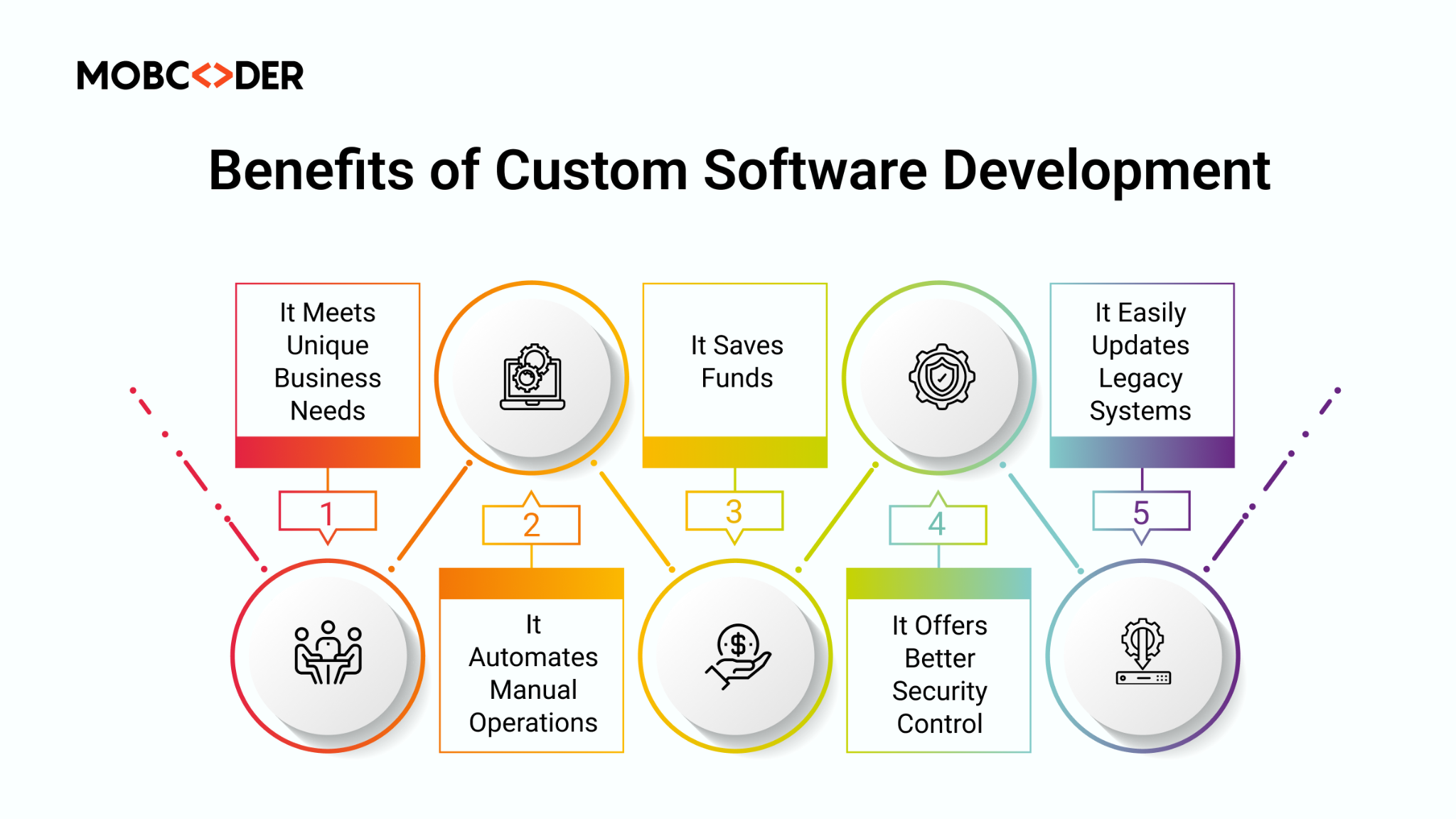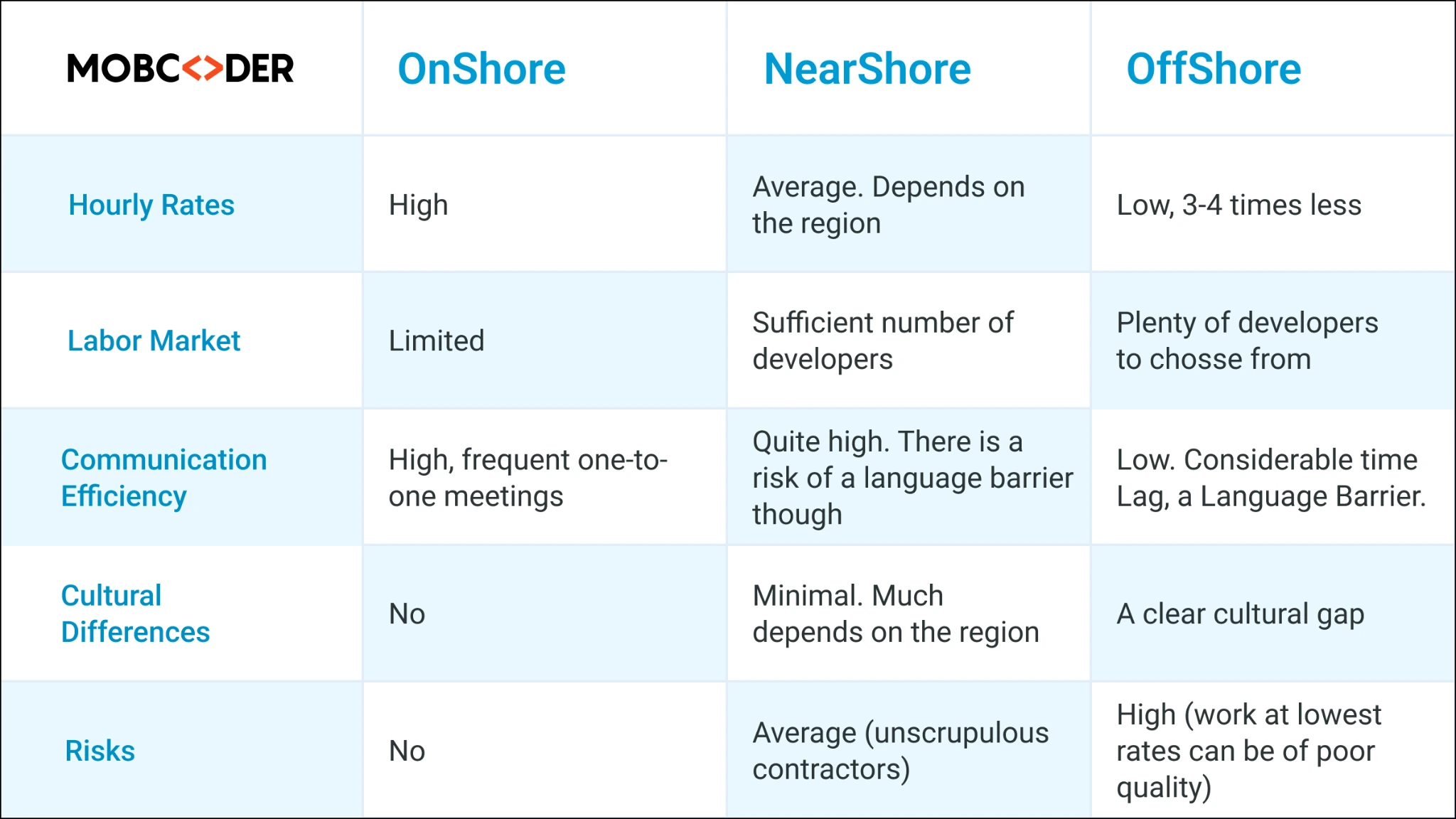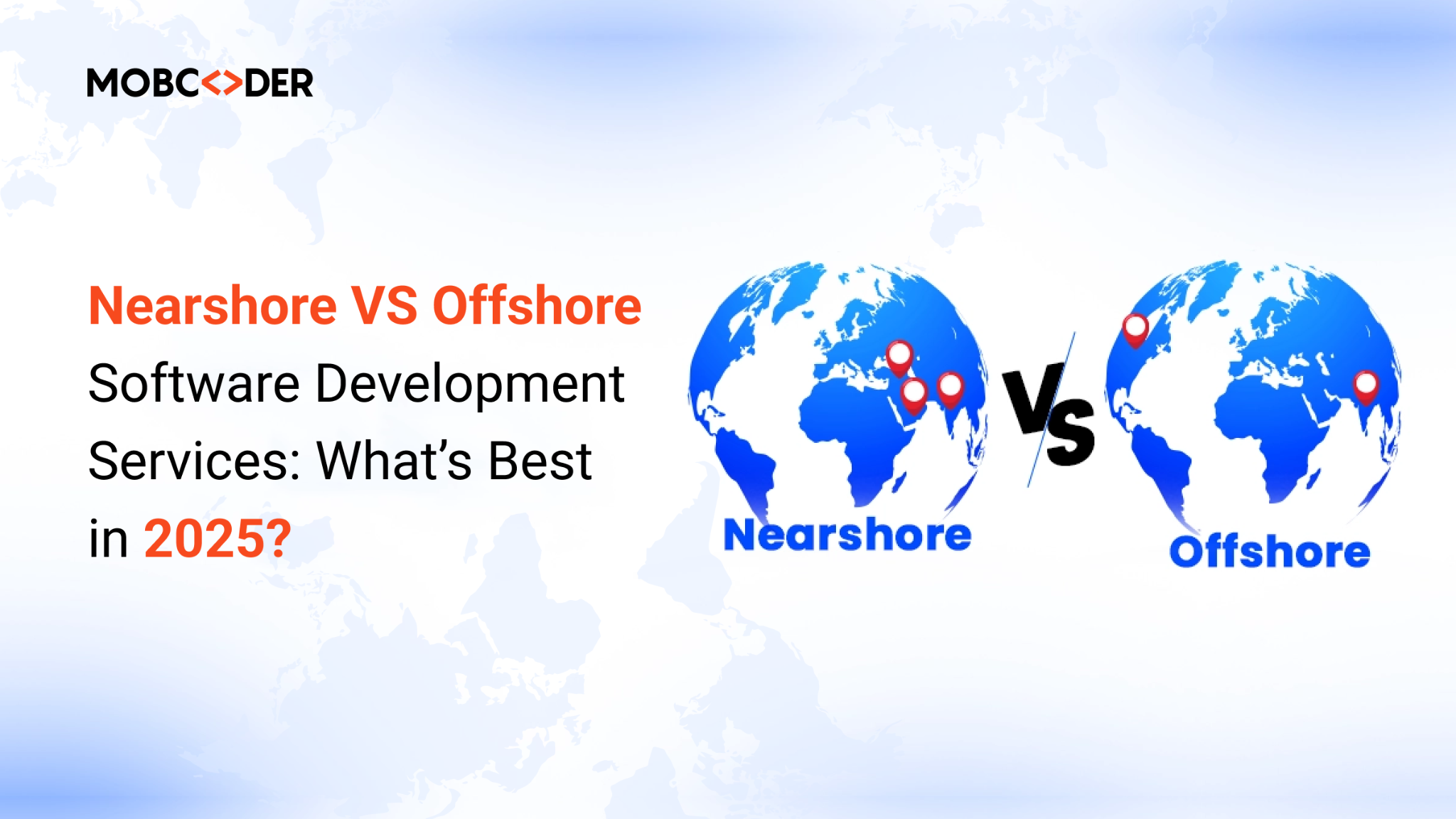In today’s fast-paced digital economy, software development outsourcing is no longer just a cost-cutting measure — it’s a strategic move for innovation, scalability, and speed to market. Businesses in 2025 are increasingly faced with a choice: Nearshore or Offshore software development services.
While both offer access to global talent, lower operational costs, and faster delivery, each comes with unique advantages and challenges. In this article, we’ll break down the differences between nearshore and offshore development, analyze their benefits and drawbacks, and help you determine which is best for your business in 2025.
1. What Is Nearshore Software Development?
Nearshore software development means outsourcing your projects to a company located in a neighboring or nearby country, typically within a similar time zone.
For example:
- A U.S. company hiring developers in Mexico or Colombia.
- A UK company working with teams in Poland or Portugal.
Key characteristics of nearshore outsourcing:
- Minimal time zone difference (usually 1–3 hours).
- Cultural and language similarities.
- Easier travel for face-to-face meetings.
Also Read - Why Flutter app development is the future of application development?
2. What Is Offshore Software Development?
Offshore software development means hiring developers from countries much farther away — often across continents — with a significant time zone difference.
For example:
- A U.S. company outsourcing to India, Vietnam, or the Philippines.
- A Western European business working with teams in South Asia.
Key characteristics of offshore outsourcing:
- Time zone gap (often 6–12 hours)
- Lower costs due to cheaper labor markets
- Wider talent pool with niche skill sets.
3. Nearshore vs Offshore: Key Differences

4. Advantages of Nearshore Software Development
In 2025, nearshore outsourcing has gained popularity due to its blend of cost efficiency and collaboration benefits.
4.1. Time Zone Alignment
Working in the same or similar time zone allows real-time collaboration, faster feedback loops, and smoother project management.
4.2. Cultural and Language Similarities
Fewer cultural gaps mean fewer misunderstandings, helping ensure the final product matches your vision.
4.3. Ease of Travel
Business trips for kickoffs, training, or quality assurance are quicker and cheaper.
4.4. Strong Data Protection
Nearshore countries often share similar regulations (such as GDPR in Europe), making compliance easier.
5. Advantages of Offshore Software Development
Offshore development remains attractive in 2025, especially for cost-conscious projects.
5.1. Significant Cost Savings
Labor costs in offshore locations can be 50–70% lower than in the U.S. or Western Europe.
5.2. Access to Global Talent
Offshore hubs like India and Vietnam offer large pools of highly skilled developers, often with expertise in niche technologies.
5.3. Around-the-Clock Productivity
Time zone differences can work in your favor — while your in-house team sleeps, your offshore team works.
5.4. Scalable Workforce
Offshore teams can ramp up or down quickly, adapting to changing project demands.
Also Read - How AI is Changing the Landscape of Mobile App Development World? Home Blog App Development
6. Challenges of Nearshore and Offshore Development
No model is perfect — here are the key drawbacks of each.
6.1. Nearshore Challenges
- Costs higher than offshore
- Talent pool smaller compared to global reach
- Limited 24/7 productivity due to similar working hours
6.2. Offshore Challenges
- Communication barriers from time zone differences
- Cultural and language differences may slow progress
- Travel can be expensive and time-consuming
- Data security compliance may require extra due diligence

7. Factors to Consider When Choosing in 2025
Choosing between nearshore vs offshore software development depends on your project requirements, budget, and communication needs. Here’s what to evaluate:
7.1. Project Complexity
If your project requires constant collaboration, nearshore may be better. For well-defined, long-term projects, offshore can work well.
7.2. Budget Constraints
If cost savings are the top priority, offshore often offers the lowest rates.
7.3. Talent Requirements
For niche or highly technical skills, offshore markets may have a broader selection.
7.4. Time-to-Market
If you need to deliver fast and require real-time communication, nearshore is often more efficient.
8. The 2025 Trend: Hybrid Outsourcing
Many companies in 2025 are choosing a hybrid approach, combining the best of both worlds:
- Nearshore teams for core development and collaboration.
- Offshore teams for maintenance, testing, and 24/7 support.
This model allows businesses to optimize costs without sacrificing quality or speed.
Also Read - Why We're a Top AI Software Development Company in the USA
9. Which Is Best for Your Business in 2025?
Choose Nearshore If:
- You need close collaboration with your team.
- Your project requires frequent real-time communication.
- You value cultural alignment and ease of travel.
Choose Offshore If:
- Your primary goal is cost reduction.
- You have well-documented processes that require less oversight.
- You need access to a large, diverse talent pool.
10. Final Thoughts
In 2025, there is no one-size-fits-all answer to the nearshore vs offshore debate. Your decision should be guided by:
- business goals
- budget
- project complexity
- and collaboration needs.
Nearshore offers better communication and cultural alignment, while offshore provides significant cost savings and global talent access. Many businesses succeed by combining both models in a strategic hybrid outsourcing approach.

Frequently Asked Questions (FAQ)
1. What is the difference between nearshore and offshore software development?
Nearshore software development means outsourcing to a company in a nearby country with a similar time zone, while offshore development involves hiring teams in distant countries, often with a significant time zone difference.
2. Which is more cost-effective: nearshore or offshore development?
Offshore development is generally more cost-effective due to lower labor costs in regions like South Asia and Eastern Europe. Nearshore development costs are higher but offer better communication and cultural alignment.
3. Is nearshore software development faster than offshore?
Nearshore can be faster for projects that require real-time communication and frequent collaboration. Offshore teams can still deliver quickly if the project is well-documented and processes are clearly defined.
4. What are the risks of offshore software development?
Key risks include communication delays due to time zone differences, cultural misunderstandings, and potential data security challenges depending on the country’s regulations.
5. Why choose nearshore software development in 2025?
Nearshore development is popular because it offers closer collaboration, easier travel, and better alignment in work culture, making it ideal for complex or fast-moving projects.
6. Can offshore development work for agile projects?
Yes, but it requires strong project management, overlapping working hours for key meetings, and robust communication tools to ensure agile practices run smoothly.
7. What are the best countries for nearshore software development in 2025?
For U.S. companies, top nearshore countries include Mexico, Colombia, and Costa Rica. For European businesses, Poland, Portugal, and Romania are popular choices.
8. What are the best offshore software development countries in 2025?
India, Vietnam, the Philippines, and Ukraine remain leading offshore outsourcing destinations due to their skilled talent pool and competitive pricing.
9. How do I choose between nearshore and offshore development?
Evaluate factors like project complexity, budget, time zone requirements, and desired communication frequency. If collaboration is key, nearshore may be best. For cost savings, offshore is often the choice.
10. Is it possible to combine nearshore and offshore development?
Yes. Many companies adopt a hybrid outsourcing model — using nearshore teams for core development and offshore teams for maintenance or 24/7 support — to balance cost, quality, and speed.






